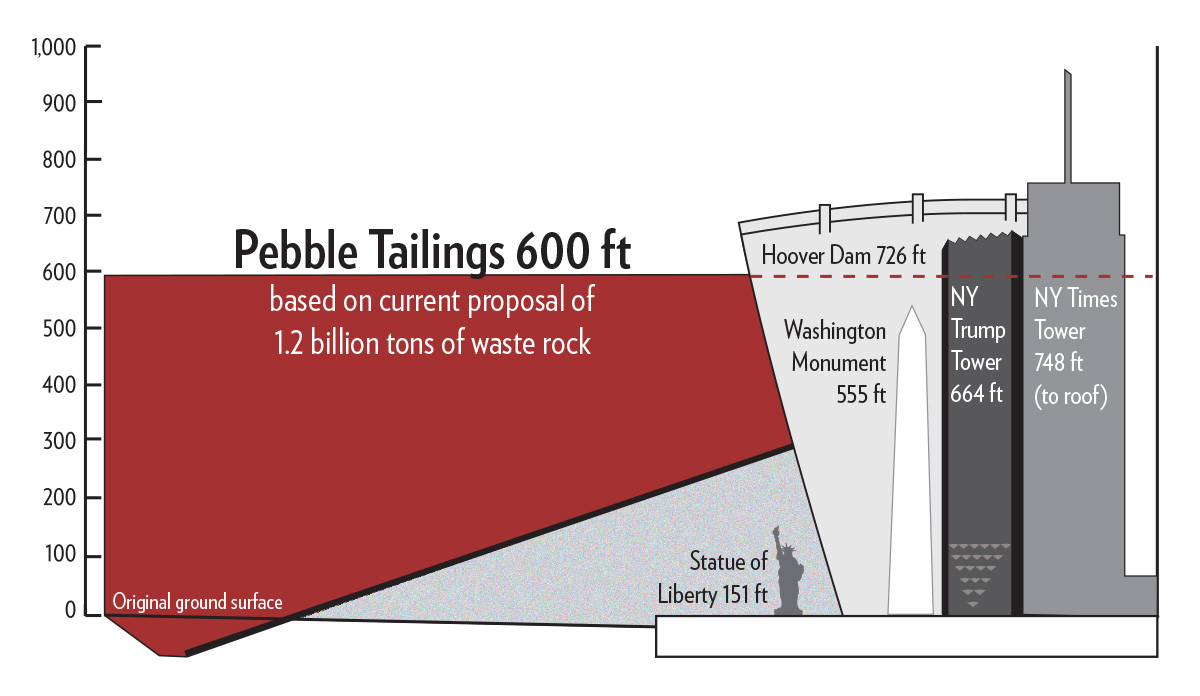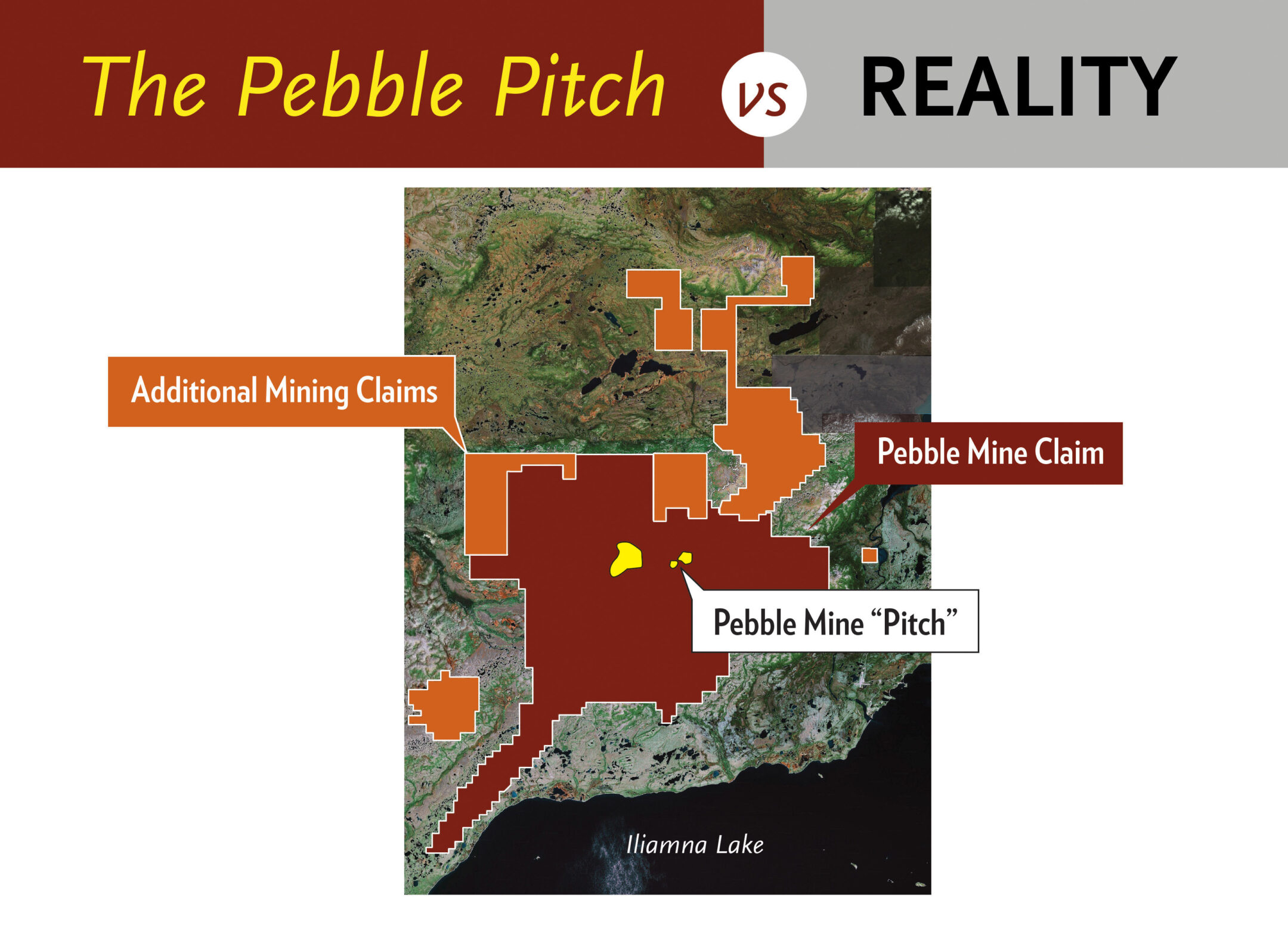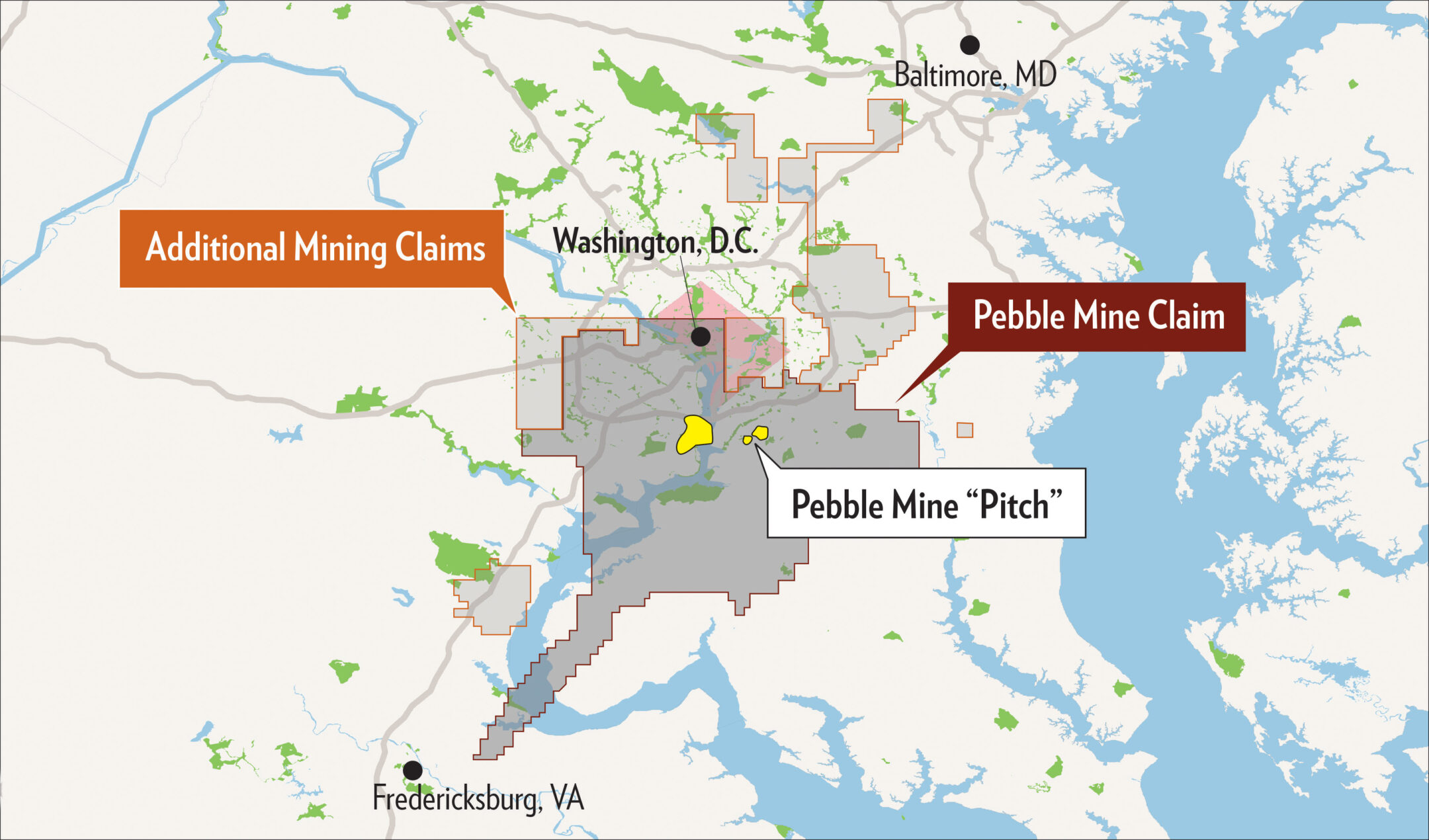Former Rio Tinto staffer says the mine could lose billions under current scenario.
Pebble Limited Partnership’s bid to establish an open pit mine at the headwaters of the world’s richest sockeye fishery doesn’t pencil out financially, according to an international mining expert.
Instead, its latest plan appears to be a Trojan horse designed to gain entry for what will eventually be an even larger and more damaging open-pit copper and gold mine near Bristol Bay, Alaska, home to a $1.5 billion salmon fishing economy and dozens of communities that depend on salmon.
This expert testimony comes in the midst of the U.S. Army Corps of Engineers’ 90-day comment period on a hastily develop environmental impact statement (DEIS) that did not require Pebble to clearly state its business case.
You have until June 29 to send your comments to the Army Corps of Engineers: Tell them to stop a sham permitting process.
As proposed, the project is “almost certainly not economically feasible,” Richard Borden, an independent environmental consultant who spent 23 years working for Rio Tinto PLC, wrote to the Army Corps. Rio Tinto was one of three mining giants that abandoned huge investments in the Pebble project. “These are approximate, back-of-the-envelope calculations,” he added, because Pebble has not established a business plan to fully evaluate.
In 2011, Pebble’s proponents commissioned a study that estimated a fully permitted mine would produce a $3.8 billion profit in the first 25 years of an operation that could continue for a century, given the massive deposits of rich ore located far below the tundra.
Under the latest proposal up for federal review, which proposes harvesting low-grade ore at shallower depths for 20 years, Pebble would lose $3 billion, said Borden.
As proposed, the project would require roughly $6.7 billion in intrusive infrastructure construction, including a massive toxic waste pond surrounded by what would be the largest earthen containment dam ever built.

Scientists warn the dam has a significant risk of failure over time, with potentially catastrophic effect on Bristol Bay salmon.
The Army Corps impact statement estimates the new Pebble Mine proposal would damage 3,458 acres of wetlands, and would affect 80 miles of salmon streams in the region.
The impact would be even larger if Pebble were to expand to a large footprint to mine over a 78-year period, a scenario it has previously contemplated.
Such expansion is Pebble’s real intention, testified former Alaska legislator Rick Halford at a state hearing recently: “This mine is at least a mile deep and it’s the richest at depth, and to mine your way down to the money and then stop is a ridiculous assumption.”
Tom Collier, CEO of the Pebble Limited Partnership, concedes: “it would be unlikely that in the future someone wouldn’t want to take some portion if not all of the rest of the ore out of the ground.”
Ron Thiessen, CEO of Vancouver, B.C.-based Northern Dynasty Minerals, which controls Pebble, has said: “…This project, it’s a multi-generational opportunity. It’s size and scale will lead to a very, very long life mine… And when you build the infrastructure in there and you’ve got a concentrator, you can feed it forever.”

Pebble is pitching a “smaller” mine foot print, but in reality it is just the beginning and will open the way for a much larger mining operation. Compare Pebble and other mining claims in scale with Washington D.C.

